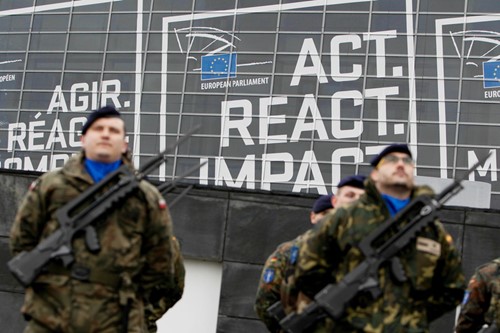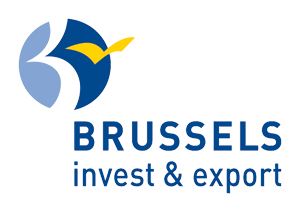The EU between strategic autonomy and the transatlantic relationship
Mattia Caniglia
01 February 2020

Introduction
Josep Borrell, the EU’s top foreign policy official, recently declared that if Europeans want to avoid being squeezed into insignificance by great powers who are mercilessly engaging in realpolitik while using Europe as a chessboard, then they must “learn to use the language of power” and be ready to implement all the necessary measures to make the European Union (EU) a more strategically autonomous security player. While the EU seems to be motivated to strengthen its strategic autonomy, this will require more attention to designing EU defence and security cooperation initiatives, so that they strengthen both European and transatlantic security also considering the problems experienced today by the North Atlantic Alliance.
The EU stride towards strategic autonomy
European cooperation in matters of defence and security has made unprecedented strides since 2014 and further progress is expected under the new European Commission. Driving these developments is a combination of internal and external factors. Among them is a more challenging security environment in Europe, the disruptive impact of the Brexit and the U.S. President Donald Trump’s posture both within NATO and on the international scene, demands for deeper European Union integration in the wake of the 2009 Eurozone debt crisis, and defence industrial rationales.
The EU’s ambition to become a more strategically autonomous security player capable of taking more independent action, especially in its own neighbourhood, was already officially formulated in the 2016 European Global Strategy. But, since then the Union has struggled to create decision-making structures that can act swiftly and autonomously in crises, necessary civilian and operational capabilities to carry out these decisions, and the means to produce the necessary capabilities through a competitive high-tech European defence industrial base.
Regardless of the difficulties, closer defence and security cooperation among the EU Member States has indeed made it to the top of the agenda. At the core of this new impetus is the goal of leveraging EU tools to strengthen European security. In particular, new EU defence initiatives such as Permanent Structured Cooperation (PESCO) and the European Defence Fund (EDF), though still nascent, are potential game changers in this regard. PESCO operates as a platform for groups of member states to cooperate on defence capability projects. The EDF, as an internal market instrument backed up by European Commission co-funding, has the potential to spur and incentivize collaboration on the development and acquisition of new capabilities between member states.
These initiatives lay a framework upon which stronger cooperation can gradually be structured. Nevertheless, these new European defence schemes will require the right level of ambition, be successfully implemented, and contribute to strengthening both European and transatlantic security.
NATO’s problems
The above-mentioned increased geopolitical instability arisen in latest years has somehow benefitted NATO. The Russian invasion of Crimea, the war in Ukraine and the migration crisis have indeed started a process of reversal of the long-standing decline in defence spending in Europe which had troubled the Alliance for years.
However, some problems remain. Today NATO’s member states see their national security dilemmas differently, and the question remains to what extent will they be able and willing to merge these into an overarching strategic direction for the Alliance. Although Russia’s military seizure of Crimea shook NATO out of its post-Cold War complacency, the regional security optic remains the dominant variable across the alliance. Flank countries like Norway, Sweden, the Baltic States, Poland, and Romania see Russia as the overarching threat; Germany and France recognise that Russia is threatening the rule-based European order, but do not seem to believe that they are threatened in the same way as the flank states. Moreover, ever since the MENA and Sub-Saharan Africa mass immigration wave first crashed onto Europe’s shores countries like Germany, Italy, and France have increasingly seen the South as the primary area of concern, with France and Italy looking deep into Africa, as far as the Sahel. Adding to these elements, there is also the tough question of how Turkey, the provider of the second largest standing military force in NATO, will set its priorities going forward, especially when it comes to its relations with Russia and its aggressive posture in Syria and Libya.
At the same time, the United States are faced with increased security concerns in Asia, growing instability in Europe and MENA and escalating competition in Sub Saharan Africa, the High North and the Arctic.
The recent NATO Summit in London provided little help in answering the fundamental questions of what the Alliance’s shared threats and priorities are, and how to build an enduring consensus on the strategy and resource allocation needed to implement it.
Finding a way towards
Although NATO has not yet found a way to build a badly needed new Western global strategy for the future, it is certain that the coming era of state on state competition will require a deeper alignment of interests across the West. Confronted with the rise of China’s power and influence in the Pacific, Russia’s renewed strategic assertiveness, worrying tensions and competition in the Middle East, the United States might use a more strategically autonomous European Union able to keep security competition in and around Europe at a low-level.
In this sense, the United States should broadly welcome the prospect of a stronger EU security and defence role. If well designed and executed, European defence projects can make valuable contributions toward strengthening the North Atlantic Treaty Organization by helping to bring about more European military capabilities and promoting investments in defence technology innovation. The EU can also put forward valuable cyber, hybrid, and civilian crisis management tools that have the potential of mutually reinforcing NATO- and U.S.-led military operations. EU defence projects stand to benefit NATO and U.S. forces operating in Europe in concrete ways, such as by removing obstacles for military transports to move around Europe. Moreover, as Washington gears up for a sustained period of great power competition against China, a stronger Europe—one that is less dependent on Washington for its own security—would be a tremendous asset.
However, the Trump administration has reacted negatively to new EU defence schemes, expressing concern that they can duplicate NATO efforts and harm transatlantic interoperability. This is partly misplaced fear, partly exaggeration, and partly based in actual concerns.
The real transatlantic difference revolves around industrial interests. The strongest U.S. opposition has to do with restrictions on the schemes that prevent non-EU countries from participating in new EU defence projects. However, this otherwise manageable dispute should not keep both sides from focusing on resolving their main differences and working toward a shared understanding about the role of European defence cooperation in transatlantic security.
Although the United States will have to understand and accept a higher degree of European independence as part of a rebalanced transatlantic relationship, the EU is not in a position to pursue complete autonomy in a way that fully assuages its member states’ security concerns.
In conclusion, the issue of EU strategic autonomy vs. the transatlantic relationship should not be regarded as a tertium non datur dilemma. Rather, the EU should take steps to ensure that the United States are not excluded from new EU defence initiatives, and should prioritize capabilities over integrationist objectives, and find a third, reconciling way forward.
Mattia Caniglia
